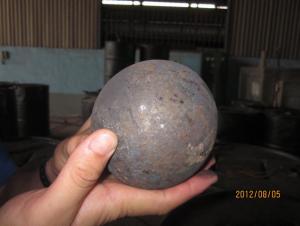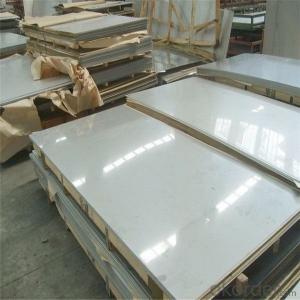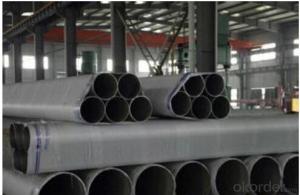Stainless Steel Mohs Hardness
Stainless Steel Mohs Hardness Related Searches
Best Paint For Stainless Steel Blanket Insulation For Steel Buildings Primer For Galvanized Steel Foam Filter For Stainless Steel H S Code For Stainless Steel Surface Grinding Wheels For Stainless Steel Surface Grinding Wheels For Hardened Steel Hole Saw For Stainless Steel Paint For Stainless Steel Stainless Steel For BbqHot Searches
Steel Mesh Panels For Sale Price For Stainless Steel Scrap Scrap Price For Stainless Steel Price For Stainless Steel Stainless Steel Tank For Sale Stainless Steel Sheets For Sale Cheap High Tea Sets For Sale Stainless Steel Tanks For Sale Stainless Steel For Sale High Density Fiberboard For Sale Solar Hot Water Collectors For Sale Scaffolding For Sale In Uae Scaffolding For Sale In Ireland Scaffolding For Sale In Houston Type Of Inverter For Solar Price Of Shipping Containers For Sale Types Of Inverter For Solar Stock Price For Aluminum Used Solar Inverter For Sale Steel Mesh Panels For SaleStainless Steel Mohs Hardness Supplier & Manufacturer from China
Okorder.com is a professional Stainless Steel Mohs Hardness supplier & manufacturer, offers integrated one-stop services including real-time quoting and online cargo tracking. We are funded by CNBM Group, a Fortune 500 enterprise and the largest Stainless Steel Mohs Hardness firm in China.Hot Products
FAQ
- Some of the different types of stainless steel sheet finishes for pharmaceutical applications include 2B finish, 2D finish, BA finish, and mirror finish.
- When considering stainless steel sheets for your project or application, it is crucial to take into account the specific requirements, as there are several varieties available in the market, each with its own unique properties and applications. Here are some of the most common types: 1. Austenitic Stainless Steel Sheets: Widely used and highly popular, this type of stainless steel offers exceptional corrosion resistance, high strength, and good formability. It finds extensive usage in kitchen equipment, food processing plants, and pharmaceutical industries. 2. Ferritic Stainless Steel Sheets: Distinguished by a higher chromium content and lower carbon content in comparison to austenitic stainless steel, ferritic sheets are renowned for their outstanding stress corrosion cracking resistance. They are commonly utilized in automotive applications, architectural structures, and appliances. 3. Martensitic Stainless Steel Sheets: Boasting a higher carbon content than other types, martensitic sheets provide exceptional strength and hardness. They are frequently employed in applications requiring wear resistance, such as cutlery, surgical instruments, and turbine blades. 4. Duplex Stainless Steel Sheets: These sheets possess a mixed microstructure of austenite and ferrite, offering a combination of high strength and excellent corrosion resistance. They often find application in chemical processing plants, oil and gas industries, and marine environments. 5. Precipitation Hardening Stainless Steel Sheets: Heat-treatable and known for their high strength and corrosion resistance, precipitation hardening sheets are commonly found in aerospace applications, defense equipment, and high-performance industries. Considering the unique properties and advantages of each type, it is crucial to carefully evaluate the specific requirements of your project or application when selecting the appropriate stainless steel sheet.
- The main difference between cold rolled and hot rolled stainless steel sheets lies in the manufacturing process. Cold rolled stainless steel sheets are produced by rolling the steel at a lower temperature, which results in a smoother and more polished finish. Hot rolled stainless steel sheets, on the other hand, are produced by rolling the steel at a higher temperature, which makes them less smooth and less polished. Additionally, hot rolled sheets tend to have a thicker gauge compared to cold rolled sheets.
- Yes, stainless steel sheets can be used for bridge construction. Stainless steel is a highly durable and corrosion-resistant material, making it an excellent choice for bridge construction where exposure to harsh environmental conditions is a concern. Stainless steel sheets offer structural strength, stability, and long-term reliability, making them suitable for various bridge components such as beams, girders, and decking. Additionally, stainless steel's aesthetic appeal and low maintenance requirements further contribute to its suitability for bridge construction projects.
- Stainless steel sheets, in general, exhibit resistance towards alkalis. The corrosion resistance of stainless steel is renowned, as it possesses a notable ability to withstand various chemicals, including alkalis. This resistance can be attributed to the inclusion of chromium in the alloy, which generates a shielding oxide layer on the surface of the stainless steel. Consequently, the material remains safeguarded from corrosion or harm caused by alkalis. Nevertheless, it is crucial to acknowledge that the degree of resistance may differ based on the particular grade and composition of the stainless steel.
- To determine the thickness of stainless steel sheets required for a specific application, several factors need to be considered. These factors include the type and magnitude of the load or stress the sheet will be subjected to, the desired level of durability and strength, the specific application requirements, and any applicable industry standards or regulations. Engineering calculations, material testing, and consultation with experts in the field can help in determining the appropriate thickness for the stainless steel sheets needed for the specific application.
- There are various types of stainless steel sheet thicknesses available, ranging from thin sheets with thicknesses as low as 0.4mm to thicker sheets with thicknesses up to 6mm or more. The specific thicknesses available may vary depending on the manufacturer and the intended application of the stainless steel sheet.
- To prevent fingerprints on stainless steel sheets, there are several steps you can take: 1. Clean the surface: Before taking any preventive measures, make sure to thoroughly clean the stainless steel sheets using a mild detergent or stainless steel cleaner. This will remove any existing fingerprints or smudges. 2. Use gloves: When handling stainless steel sheets, wear gloves to prevent transferring natural oils from your hands onto the surface. Opt for cotton or nitrile gloves, as they provide a good grip and won't leave behind residue. 3. Avoid touching directly: Try to minimize touching the stainless steel surface as much as possible. This can be achieved by using specialized tools or wearing gloves when handling and installing the sheets. 4. Apply a protective coating: There are various protective coatings available in the market specifically designed for stainless steel. These coatings create a barrier that repels fingerprints and makes cleaning easier. Follow the manufacturer's instructions for proper application. 5. Use microfiber cloth: When you need to clean the stainless steel sheets, use a soft microfiber cloth. Microfiber is gentle on the surface and helps prevent streaks and fingerprints. Avoid using abrasive materials or rough scrubbers that can damage the stainless steel finish. 6. Regular cleaning routine: Establish a regular cleaning routine to remove any fingerprints or smudges that may appear over time. Dilute a mild detergent in warm water and use a soft cloth or sponge to wipe down the stainless steel sheets. Rinse with clean water and dry thoroughly. By following these preventive measures and cleaning techniques, you can significantly reduce the appearance of fingerprints on stainless steel sheets and keep them looking clean and pristine.















































